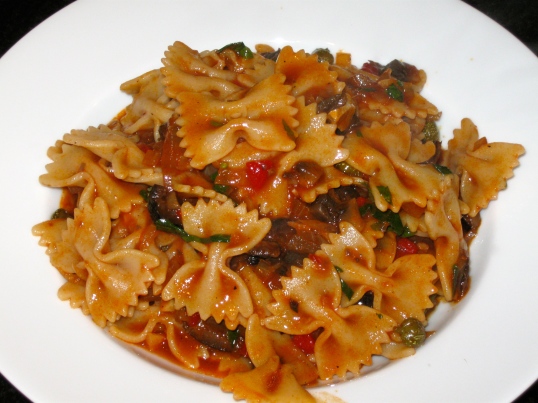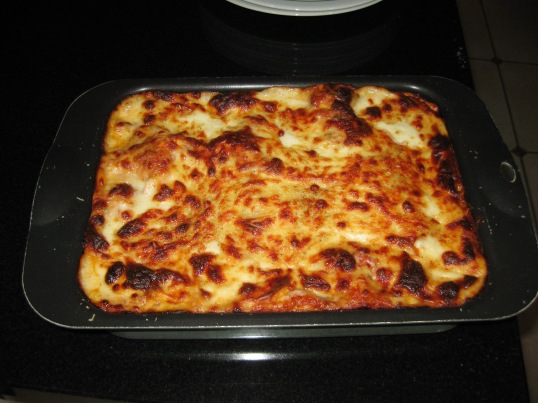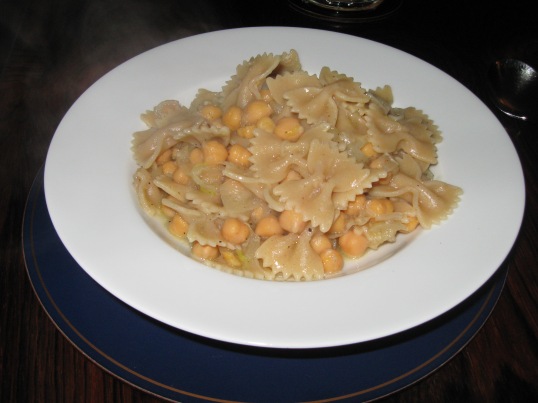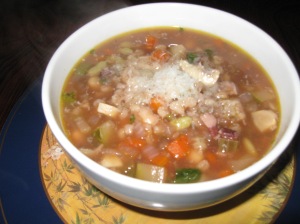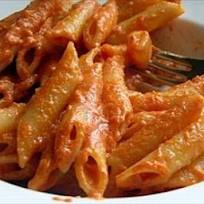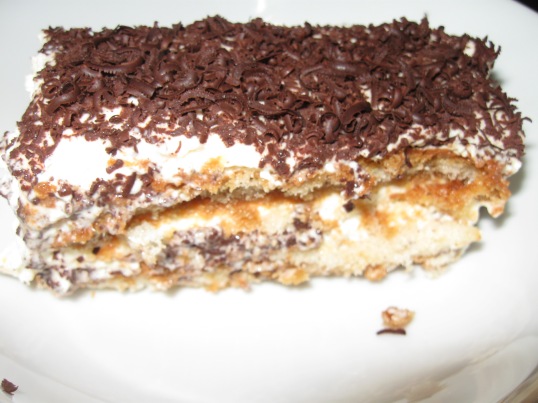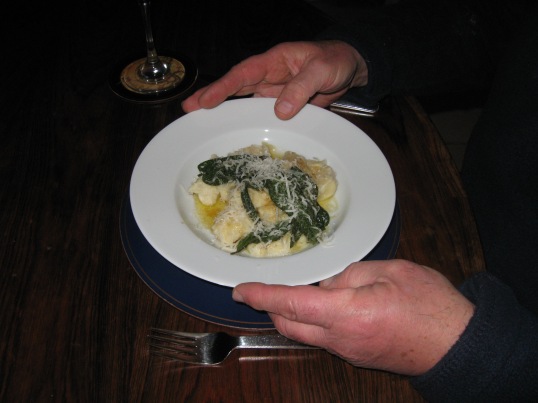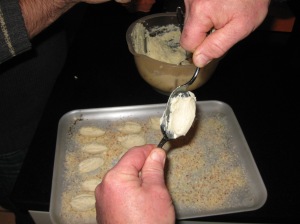Pasta puttanesca
After a weekend of stuffing our faces courtesy of the generous hospitality of our friends we felt Monday should be a ‘rehab’ day and we ate fairly lightly. A simple green salad with a little chopped cheese and ham for lunch and pasta for dinner. Nothing creamy or heavy, just a light, but tasty, tomato based pasta. We decided on puttanesca – that never fail to please, simple, but oh so complex, classic example of cucina povera. Easily put together from store cupboard basics so that we didn’t even need to venture out to the shops in the wet and wild day that raged outside. The classic pasta to use is probably spaghetti but we decided on farfalle – really you can use whatever you fancy or happen to have to hand.
serves 2 – easily doubled
- 1 shallot, finely chopped
- olive oil
- 2 garlic cloves, finely chopped
- 400g tomatoes from a good quality tin, chopped
- 2 tbsp capers, chopped
- 2 anchovies, drained and chopped
- handful black olives, pitted and sliced
- large pinch dried chilli flakes
- 175g spaghetti or other pasta
- small bunch flat-leaf parsley, roughly chopped
Heat a little oil in a wide frying pan and cook the shallot until soft but not browned. Add the garlic, capers, anchovies, olives and chilli flakes and cook gently for a few minutes until the anchovies have dissolved. Add the tomatoes and continue to cook until slightly reduced, about 10 minutes. Check the seasoning and add salt and pepper if needed – you may not need either with the anchovies, olives and chilli flakes. It may need a pinch of sugar if the tomatoes are on the acid side.
Cook the pasta according to the packet instructions. Drain, add to the sauce with the parsley, toss to combine and serve.
TIP:-
It is often useful to add a little of the pasta cooking water to thin the sauce if it is too thick or to stop the pasta being too ‘gooey’ if it is very absorbent and a recipe will tell you to “retain some of the cooking water”. Instead of trying to catch some of it when you drain the pasta simply take a teacup and fish out a cupful just before you drain the pasta. You can then thin the sauce/ pasta with this water which is much easier.

